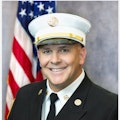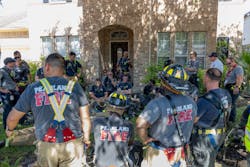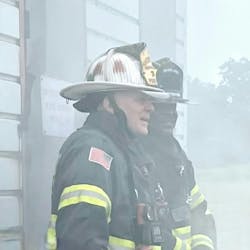Rogue Firefighting: Cutting Through the Mixed Signals
Key Takeaways
- Some fire service leaders publicly romanticize the concept of "rogue firefighting." However, it risks sending even an unintended green light for freelancing, self-dispatching, ignoring command structure or operating outside of SOGs/SOPs.
- There's a critical difference between being smartly aggressive and being reckless.
- The message that fire service leaders give in public must match the one that they give in uniform to their people.
In today’s fire service, culture is shaped not only by the calls that are run and the training that’s conducted but also by the voices that are heard—in the firehouse kitchen, on the conference stage, in podcasts, in social media feeds and in trade publications. Those voices matter, particularly when they come from respected leaders.
Recently, I noticed a troubling trend: Some fire service leaders, including a few chiefs, began to publicly romanticize the concept of “rogue firefighting.” The term sounds bold. It sounds gritty. To some, it even sounds like a rally cry to break away from bureaucracy and “just get the job done.”
Here’s the danger: For newer, more impressionable members, that message can be confusing, even dangerous. When a respected voice says “rogue” in the context of the fireground, it risks sending an unintended green light for freelancing, self-dispatching, ignoring command structure, or operating outside established standard operating guidelines (SOGs) or standard operating procedures (SOPs). Those behaviors might feel heroic in the moment, but they erode coordination, create accountability gaps and put lives at risk.
Intent behind the message
To be fair, not every leader who uses “rogue” language intends to promote unsafe behavior. Some simply might be looking for a colorful way to describe adaptability or thinking outside of the box. Others might be trying to inspire aggressive action when conditions demand it. Finally, in some cases, the motive might be to sell books, fill seminar seats or generate social media buzz.
Regardless of intent, the effect can be the same: a dangerous mixed message. The truth is, no chiefs who promote “rogue” behavior on a podcast would tolerate it within their own department. If one of their firefighters freelanced at a fire, took independent action without communication or disregarded orders, those chiefs would be the first to address it through discipline or counseling.
Yet, when the public message is different from the in-house standard, what’s left is inconsistency, which is the enemy of effective leadership. In the fire service, inconsistency breeds confusion, and confusion in our environment can get people hurt or killed.
What ‘rogue’ really means
The dictionary definition of “rogue” is revealing.
As a noun: A dishonest or unprincipled person; someone unpredictable and acting without integrity. Example: “The investor turned out to be a rogue who swindled people out of their savings.”
As an adjective: Operating dangerously, unpredictably or outside normal rules. Example: “The military tracked a rogue missile launch.”
In the fire service, we have our own language for the same concept:
- Freelancing: Taking action without orders or coordination.
- Independent action: Operating outside of the assigned task or sector.
- Self-dispatching: Responding to an incident without being requested through the incident command system.
- Operating outside of SOPs/SOGs: Deviating from established policy.
- Cowboy tactics: Slang for aggressive, often reckless, behavior that ignores coordination.
These might sound exciting to say, but they have no place in sound, disciplined fireground operations.
Smartly aggressive, not reckless
Aggression in firefighting isn’t a bad thing. In fact, often, it’s necessary. However, there’s a critical difference between being smartly aggressive and being reckless. Smartly aggressive means that actions are intentional, not impulsive. Training and muscle memory drive execution. Situational awareness guides tactics. Effort aligns with the incident strategy and the incident commander’s plan. It’s a blue-collar work ethic: grinding, dependable and focused on mastering the basics.
Smartly aggressive firefighters don’t shy away from risk, but they manage it. They push hard, but they also think. They execute aggressively within the framework of communication, coordination and accountability.
Being hard-nosed and technically excellent doesn’t require being “rogue.” Discipline and coordination don’t make us soft; they make us survivable.
Power and risk of influence
In today’s connected world, influence is a double-edged sword.
Many in our profession share high-quality training, experience and insight across digital platforms, and their contributions make all of us better. Others, despite minimal operational experience, command large audiences simply because they speak well, post often or mastered the art of online branding.
Some of these voices barely are removed from their own probationary period. Others hold impressive résumés that read like a career of experience. However, as we say in Texas, they’re “all hat and no cattle.” They might look the part, talk the talk and carry the right titles, but the substance isn’t there.
When someone who lacks the depth of experience to truly understand the stakes starts to promote dangerous or inconsistent messages, it’s our responsibility to recognize it, call it out and protect our people from it.
Consistency builds trust
Leadership credibility rests on one thing above all: consistency. If you’re a leader, the message that you give in public must match the one that you give in uniform to your own people. That doesn’t mean that you can’t inspire, challenge or push your teams to be aggressive and effective, but it does mean that you hold the same standard in every forum.
If your crews hear you speak one way in a podcast and another way in the station, you’ve lost alignment—and with it, trust. Trust is hard to build, easy to lose and impossible to operate without.
Mentorship: the long shadow
A mentor’s influence can stretch far beyond a single conversation. The words, attitudes and philosophies that person shares often become the mental operating system for the people who the mentor guides.
That’s why choosing a mentor isn’t something to do lightly. When you choose who you’ll learn from, you choose whose habits, values and decision-making style you might inherit.
Good mentors are consistent, experienced and invested in their mentee’s growth. Bad mentors are inconsistent or self-promoting or are willing to sacrifice safety for style. Either way, their influence will trickle down into their mentee’s actions and decisions.
If a message sounds exciting but doesn’t pass the smell test—if it can’t stand up to operational reality—then it’s worth questioning.
Role of SOGs/SOPs
SOGs and SOPs exist for a reason. They’re not meant to slow us down or tie our hands; they’re designed to create predictable, safe and effective coordination under high stress.
Operating within SOPs means clear roles and expectations; predictable actions between companies; efficient use of resources; reduced duplication or missed tasks; and enhanced firefighter survival.
Breaking SOPs for legitimate tactical reasons can happen, but it’s a decision that belongs within the chain of command, not as a solo judgment call without coordination. However, they do require constant monitoring to consistently improve the measures contained within. They should be dynamic documents that are assessed routinely.
Protecting the next generation
For newer members—the ones who still are building their foundation of habits, judgment and operational understanding—the mixed messages about “rogue” operations can be particularly harmful. Those members might not have the experience to see the difference between decisive action and unsafe freelancing. They might not realize that the same leaders who glamorize “rogue” on a podcast never would accept it on their own fireground.
It’s fire service leaders’ responsibility to protect them from that confusion. That means reinforcing clear expectations during training, explaining the “why” behind policies and assignments, and showing them what smartly aggressive looks like in practice.
Choosing words—and legacy
Fire service leaders control their own narrative and their own legacy. Every message that they send, whether in person, in print or online, either strengthens or weakens the profession.
“Rogue” might sound bold, but coordinated, disciplined and well-trained saves lives. That’s the standard that’s worth promoting.
So, choose mentors carefully. Choose words carefully. Remember, in the fire service, style never outweighs substance. Titles and flashy speeches fade. Actions, consistency and the safety of the members are what last. If leaders get that right, then when they hang up their helmet, they can look back knowing that they left the fire service stronger than they found it.
About the Author

Jack "J." Taylor
Jack "J." Taylor joined the Pearland, TX, Fire Department in May 2022 as the fire chief. Taylor, a 33-year veteran of the fire service, previously served as fire chief for the Town of Trophy Club, TX. Prior to that, he served with the City of Irving, TX, where he rose through the ranks to assistant chief where he retired after 25 years of service.
Taylor is a professional actor, author, and presenter. He also was a NCAA Division 1 football referee for over 20 years where he served in the Western Athletic, Big Twelve, and Southeastern conferences. He was assigned 20 consecutive postseason assignments with his last game prior to football retirement being the 2018 College Football Playoffs National semifinal between Clemson and Notre Dame.
Taylor resides in Pearland with his wife, Staci and they have two grown sons, Jack and Nick.

